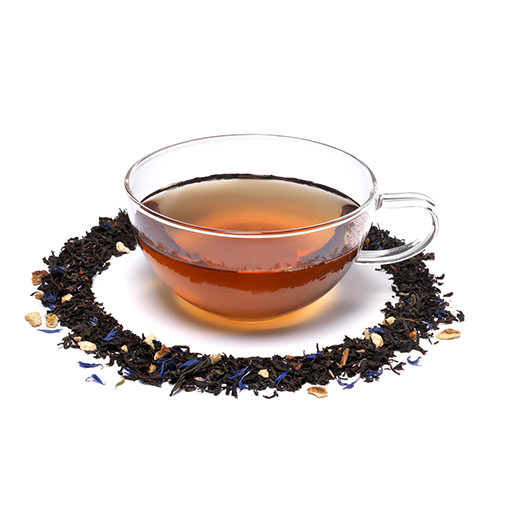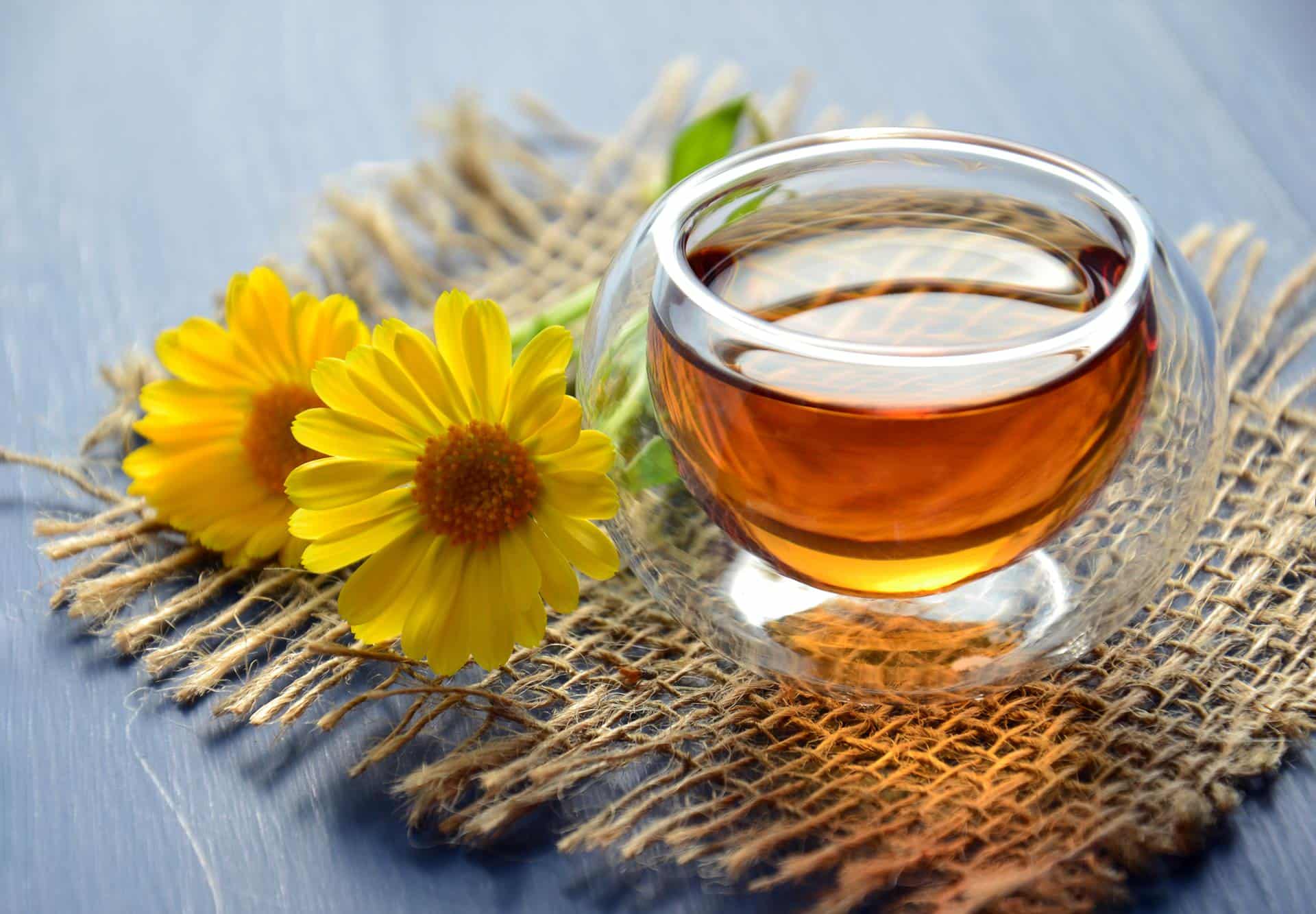Earl Grey Tea Health Benefits and Side Effects
Written by: Christopher Karam | ✔️ Medically Reviewed by: Dr. Riad M., M.D - G.P and Micheal B., M.D | Last Updated: 2020 April 27
Table of Contents
- Break Down
- Health Benefits
- Side Effects
- Nutrition Facts
- Recommendation
- Frequently Asked Questions (FAQ)
- Related Articles
- Sources
- Buy Earl Grey Tea
Break Down and Background
Earl Grey tea is one of the most popular, recognized tea beverage in the world, and hailed for its list of health benefits, ranging from the heart to digestive health.
It boasts an intriguing history that marks the intersection of the Far East and the western empires. What truly makes earl grey unique is its blend of bergamot essential oil and black tea.
Black teas didn't make their way to England until the early 17th century. The tea is reportedly named after Charles Grey, known as Earl Grey the 2nd who was the British prime minister from 1830 to 1834.
The story of its inception in London isn't well documented. Some say a Chinese mandarin who was saved by Lord Grey's men from drowning delivered the tea as a gift.
Others say that he was given a black tea flavored with bergamot as a diplomatic gift. Regardless of the true story's origin, the popularity of black teas was solidified through its consumption by the royals, rich, and elites.
Lady Grey served the tea during political and diplomatic meetings with a host of nations.
Charles Grey’s family worked with Chinese tea experts to create a special blend designed specifically to offset the flavor of lime that was present in the water near their Howick Hall estate.
This recipe was eventually sold to Twinings and the same recipe was used in their tea blends until 2011. Packed in either tea bags or sachets.
For the majority of flavored teas, their tea leaves are infused or blended with fruit, herbs or spices. The rind of the bergamot is dried and added to black tea leaves to produce earl grey tea.
Part of the blend of herbs used to make earl grey tea is derived from a plant called Camellia sinensis which contains strong antioxidant properties which makes it a great drink for improving your overall health.
The dried leaves are harvested and undergo a production process that goes through withering, rolling, oxidation, and drying.
For black tea made with green tea leaves, better known as earl green tea. Which uses tea leaves that aren’t oxidized. Most of them are usually flavored just after the drying process is completed, depending on the flavor profile the company wants to go for.
The majority of the health benefits, side effects, and nutritional values of earl grey tea come from its bergamot essential oil blend.
The tea leaves are sprayed or coated with bergamot essential oil or extracts to infuse flavor. Alternatively, dried bergamot rinds are added to the dried leaves for infusion in water.
Tea blends that are coated with fragrant essential oils tend to have a stronger citrusy flavor and are best used in iced tea mixes.
Out of the wide variety of teas, earl grey has some of the highest ratings in terms of its ability to relax you and relieve muscular tension. That's an effect everyone could use a little more of within their daily lives.
Health Benefits
1. Earl Grey Tea is Great for Oral Health
It contains very high levels of catechin, an antioxidant that fights oral infections. Especially when consumed through iced tea drinks.
One of the most convenient health benefits of earl grey tea of protecting teeth from oral infections and tooth decay. It contains antioxidants known as catechins as well as fluoride.
These compounds are used in toothpaste and mouthwashes to prevent cavities and the breakdown of tooth enamel. Fluoride is a natural component of black teas, it’s even found in tap water.
Fluoride is good for your teeth because it protects them from cavities, as well as fighting tooth decay. So if you’re not a fan of city or tap water, earl grey can be another natural way to get your daily dose of fluoride.
2. Improves Cardiovascular and Overall Heart Health
Drinking up to three cups of earl grey tea daily may help lower your risk for heart disease and removes free radicals, this is further amplified with mixing cinnamon sticks with your tea.
Earl Grey tea contains caffeine, many nutritional enhancements, and a lot of antioxidants that support heart health and prevent serious cardiovascular diseases such as heart attacks, heart disease, and high blood pressure.
These antioxidants work to remove plaque buildup in blood vessels and the heart, helping prevent heart disease. Antioxidants are used to prevent oxidative stress that causes cell damage. Earl grey tea reduces bad LDL cholesterol when consumed regularly.
A study published in 2012 in Preventative Medicine found that people who drank three cups of earl grey tea daily dramatically lowered their blood triglyceride levels and increased the good HDL cholesterol after three months.
The participants also had increased levels of antioxidants, which, as we now know, fight against free radicals, harmful agents that damage your cells.
Further research conducted by the University of Catanzaro in Italy has also yielded positive results.
A study of over two hundred patients with high levels of blood fats found that bad LDL cholesterol was reduced by 39% after a month of taking earl grey extract.
It also reduced blood sugars by 22% and raised ‘good’ cholesterol by 41%. The reduction in blood sugar also shows that it can be highly beneficial for those suffering from diabetes.
3. Boosts Immune System Strength
It's no secret that citrus fruits are a key component in fighting off colds and the flu. The health benefits of bergamot oil are no different than regular fruits.
These nutrients include vitamin C, vitamin A, plant-based antioxidants, calcium, and iron.
The bergamot fruit extract found within earl grey blends is known to improve the immune system as well as cure fevers. As such, it’s considered to be a natural cold remedy.
It’s particularly popular in Europe and the United States during the winter months were colds and viruses are rampant.
It also helps the immune system fight off colds thanks to the presence of vitamin C. It also prevents fever and invasions of parasites.
4. Improves Digestion and Gut Health
Similarly to chamomile tea, earl grey tea’s nutrition facts have been proven and shown to improve digestion and gut health. It aids in the digestive process and helps relieve painful indigestion, colic and nausea.
It’s also used to treat intestinal problems such as worms. Because it helps the digestive process, it can also help to keep you regular.
It even boasts anti-inflammatory properties that help to alleviate gastric problems including constipation and bloating.
The tea works to soothe stomach muscles that cause cramping when constricted. It minimizes feelings of nausea when consumed before boarding a boat or plane.
5. Increased Metabolism and Aids In Weight Loss
When you consume ear’ grey, your layers of body fat are lightened by bergamot. It aids in breaking them down into energy to be used for the muscles.
It also causes a large percentage of natural bodily waste to be released through the natural process of metabolism and urination.
According to research at a university in Italy, the citrus extract that gives earl grey its distinct flavor could play an important role in weight loss.
This extract is derived from the bergamot, which is a type of orange that is found in the Mediterranean. Bergamot contains natural ingredients that help in boosting metabolism and preventing the absorption of cholesterol in the stomach.
Earl grey is one of the best black teas that stimulates the process of fat burning. You can also use it as a part of your cleansing diet to get rid of harmful toxins from your body.
It’s best to drink earl grey tea regularly since it’s a great way to lose weight without having to take drastic measures such as crash diets and other fad diets.
It is all-natural and comes with many nutrients and properties that give you a plethora of health benefits. According to research, drinking 2 to 4 cups every day will help you lose weight and improve your health in many ways.
However, you need to keep in mind that if you are trying to lose weight, the tea should be taken without milk or sugar.
Adding them will only defeat the purpose of burning calories. Since citrus is what helps boost metabolism and calorie-burning, add a dash of fresh lemon juice instead.
Side Effects and Detriments
While earl grey tea is full of nutrition, nutrient-rich, and is safe for most people, drinking too much may cause some negative side effects, especially due to the essential bergamot orange oil.
Earl grey tea is considered a black tea because of the similarity in ingredients used. It’s also flavored with oil from essential bergamot orange, which will lead to additional side effects.
1. Bergamot Essential Oil Can Cause Toxicity
Drinking large amounts of earl grey tea may cause you to ingest too much bergamot oil.
According to the Washington University Neuromuscular Disease Center, bergamot contains a toxin called bergapten, which means that if you consume too much it can be harmful to you.
It may affect potassium absorption in certain neurons and lead to muscle twitches, cramping in the hands and legs, may cause prickling or burning sensations, pressure in the eyes or blurry vision.
The center notes that these symptoms generally disappear within a week of discontinuing earl grey tea. If you experience any of these effects, however, see your doctor for a diagnosis and treatment options.
2. Issues with Iron Absorption
Earl Grey Tea contains tannic and gallic acids, two compounds that interfere with the absorption of the nonheme iron found in plant foods such as beans and leafy greens.
According to Marla Reicks, nutritionist at the University of Minnesota states, "Depending on how much of these acids are in your cup, which varies by brand, strength, and steeping time, drinking tea with a meal may reduce iron absorption by up to 75 percent".
To ensure proper iron absorption throughout your meals, it’s optimal to drink between meals and not while eating them.
3. Possible Overdose of Caffeine
Like all other natural teas, earl grey is caffeinated but more so than other non-herbal teas. A stimulant that acts on the central nervous system, that kept at a low-medium dosage can prove useful.
Up to 5 cups of tea per day is considered moderate intake, but you be too caffeinated if you consume tea on top of everything else you might eat throughout the day such as cocoa powder (chocolate), coffee, or sodas (of which you shouldn’t be having).
Drinking too many non-herbal teas such as earl grey tea, green tea, black tea, and oolong tea causes increased caffeine intake, just like coffee. This may lead to anxiety, heart palpitations, tremors, and sleeplessness when consuming too much caffeine.
Some hypersensitive people may experience these side effects after drinking just a small amount of tea or coffee. To test your body’s tolerance to caffeine it’s best to reduce how frequently and how much you consume slowly, over time.
If drinking earl grey or any other teas is something you do daily, you may also become dependent on the energy buzz and could experience withdrawal symptoms such as headaches and irritability once you stop.
Rating and Recommendation
Extremely Recommended
In summary, earl grey tea has a very wide range of health enhancements when consumed in moderation. It’s also possible to suffer a minor set of side effects when it’s taken too often.
Here’s the full list of the health benefits of earl grey tea:
Earl Grey Tea is Great for Oral Health
Improves Cardiovascular and Overall Heart Health
Boosts Immune System Strength
Improves Digestion and Gut Health
Increased Metabolism and Aids In Weight Loss
Here’s the list of side effects of earl grey tea:
Bergamot Essential Oil Can Cause Toxicity
Issues with Iron Absorption
Possible Overdose of Caffeine
The improved heart health, immune system strength boost, digestive improvements, and weight loss effects are the main key points of earl grey tea’s nutritional information.
Drinking a few cups a day is a great way to maintain the added health benefits of earl grey tea without being close to the point of overdosing on the bergamot oil.
If you enjoy black teas, they should be part of your daily diet, with moderation, without question.
Frequently Asked Questions
Popularized by Charles Grey, earl grey tea is a black tea blend flavored with bergamot oil and is in the same family of black teas. Bergamot is a flavorful essential oil that gives earl grey it's unique flavor profile, smell, and dark color tint.
Earl grey tea, depending on the manufacturer, usually contains a blend of flavored teas such as Oolong, Darjeeling, Irish breakfast, and English breakfast tea leaves. All forms of earl grey tea will always contain traces of bergamot oil.
Similarly to white tea, black tea, and green tea, earl grey varieties are flavored with either a mix of spices, other oils and extracts, flowers, or fruits.
Being one of the world's most recognized beverages, traditionally used as part of a complete english breakfast. Loose-leaf English breakfast tea is brewed in a hot kettle or in teapots and is typically served with milk and sugar.
Earl grey tea and Darjeeling are both the least caffeinated black teas, at around 40% less per gram of weight than all other forms of black tea (around 50mg of caffeine per cup). If you re-use the same tea bag, the caffeine content drops down significantly to about 15mg of caffeine per cup.
Here is how to make loose-leaf earl grey tea, you'll need the following ingredients and basic teaware:
1. Teabags or Sachets
2. A tea infuser
3. A teapot
4. 1 Cup of good quality organic tea leaves (black or oolong tea leaves)
5. 1 Container of bergamot essential oil
6. A mason jar or pint jar
Now here's how to brew all of the ingredients together, you'll need to:
1. Pour around 12 to 16 drops of bergamot essential oil in the mason jar, covering and shaking it well to cover the entire inside of the glass jar.
2. Add your organic black tea leaves into the mason jar, covering and shaking well for about 30 seconds to properly cover each leaf. You can either use this mix now or let it cure for a few days to strengthen and intensify the flavor.
3. When ready, add cold water to your kettle and heat until boiling. Do not add already hot or boiling water.
4. After it boils, set aside so the water can simmer down. Then pour the hot water into the mason jar and let the hot tea steep for as long as you want, giving the mix at least 5 minutes to properly blend, going up to 4 to 5 days for a stronger tea.
5. Enjoy!
Many tea shops and online retailers such as Amazon and Walmart sell caffeine-free and caffeinated earl grey teas.
Articles and Sources

Earl Grey Tea Nutrition Facts
Serving Size 245 g (about 8oz or 1 Cup)
| Amount Per Serving | ||
|---|---|---|
| Calories 2.5 | Calories from Fat 0 | |
| % Daily Value* | ||
| Total Fat 0 g | 0 % | |
| Saturated Fat 0 g | 0 % | |
| Polyunsaturated fat 0 g | ||
| Monounsaturated fat 0 g | ||
| Trans Fat 0 g | ||
| Cholesterol 0 mg | 0 % | |
| Sodium 0 mg | 0 % | |
| Potassium 52 mg | 2 % | |
| Total Carbohydrate 0.8 g | 0 % | |
| Dietary Fiber 0 g | 0 % | |
| Sugars 0 g | ||
| Protein 0 g | ||
| Vitamin A 0 % | Vitamin C 0 % | |
| Vitamin E 0 % | Vitamin K 0 % | |
| Vitamin D 0 % | Vitamin B6 0 % | |
| Calcium 0 % | Iron 0 % | |
| Magnesium 0 % | Cobalamin 0 % | |
Calories per gram:
Fat: 9 | Carbohydrate: 4 | Protein: 4
Source: USDA's Nutrient Database











